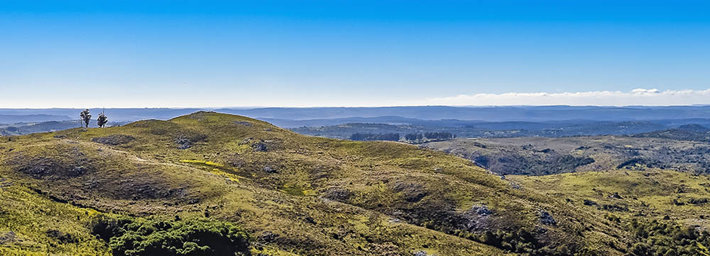Uruguay Cocaine and Drug Addiction Problem

Uruguay is a small country almost lost under Brazil’s bulk. If not for its strategic location adjacent to Argentina, Brazil and Paraguay, and its large port in Montevideo, perhaps Uruguay would have been overlooked by drug traffickers. But right around the corner from Uruguay is the region where Paraguay, Brazil, and Argentina meet. This region has long been a ripe territory for drug traffickers and the movement of drugs across national borders.
It would be hard for nearby Uruguay to completely escape this influence, especially considering all the container shipping that passes through Montevideo’s port and the international traffic that comes and goes through the airport or cruise ships.
As it is, Uruguay is seeing rising numbers of cocaine seizures and increases in domestic cocaine and coca paste consumption. It is thought that Uruguay may be serving South American drug traffickers as a strong embarkation point for drugs destined for Europe.
Uruguay’s consumption figures for cocaine bring it to third place among South American countries, with an estimated 4 percent of the population using the drug. But it’s the increase of use that is the most startling. Between 1994 and 2007, cocaine use statistics more than quadrupled.
Many Paths Exist for Drugs in Uruguay
The port of Montevideo remains vulnerable to use by traffickers, as its contraband detection capabilities are slowly being upgraded. Even cruise ships and merchant marines are suspected of smuggling drugs in small quantities.
It is thought that Colombian, Argentinean and Brazilian traffickers send frequent shipments of heroin through the Carrasco International Airport in Montevideo. In 2006, 15 kilograms of cocaine were seized, part of a pattern of increasingly large and frequent cocaine seizures.
Across the border in landlocked Paraguay, drug traffickers have absorbed Uruguayan members who want to get in on the profits to be made trafficking marijuana and cocaine base. These Uruguayans are then used as couriers.
And not only finished drug products travel on these channels. Precursor chemicals take these routes in and are distributed to manufacturing facilities across the region.
Uruguay’s Manufacturing Capabilities
In recent years, narcotics police in Uruguay have been finding and eliminating clandestine labs that bring in unrefined Bolivian coca, refine it and then ship the finished product north. Since 2005, the number of seizures of narcotics has been increasing substantially. Bolivian coca paste brought in for processing is also available cheaply in marginal neighborhoods of Montevideo. Coca paste, known in some areas as basuco or paco, is highly toxic and highly addictive.
Cannabis Supplies are Both Domestic and Imported from Paraguay
All South American countries produce some cannabis, but most of Uruguay’s supply comes in on small planes or by road from Paraguay. Uruguay has one of the highest rates of cannabis use in South America, at 6 percent of the general population having used the drug. But among school-aged children, usage rates approach 15 percent, the second-highest on the continent.
Ironically, between 2001 and 2007, cannabis use statistics followed the pattern for cocaine and also quadrupled.
Uruguay’s Government Steps Up Efforts to Reduce Demand
Using broad publicity, posters, sporting events and music venues, the Uruguayan government has been endeavoring to reduce the desire and demand for drugs by young people. But anyone involved in the drug education activities sponsored by Narconon knows that real demand reduction comes about by providing accurate information. The Narconon drug education curriculum teaches young people the truth about the long-lasting effects that drugs have on one and the damage that can be done by drug abuse and addiction. When young people are well educated instead of being told what to do, many of them make wise decisions.
The National Drug Secretariat has also funded a drug rehabilitation clinic specifically for cocaine base addicts in Montevideo. Basuco addicts, as well as all types of people dependent on drugs or alcohol, would benefit greatly from the Narconon drug treatment program available in more than 40 countries around the world. In this program, residents are thoroughly detoxified and then helped to build a new, drug-free life, based firmly on their own drug-free decisions and rehabilitated life skills.
 ®
®